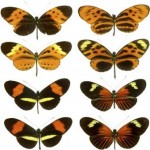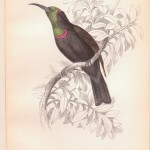Kinds Of Insects
For many researchers, analyzing all kinds of insects which could be found worldwide, in different ecosystems, is an extremely important challenge, taking into consideration the amazing diversity of this group of invertebrates, usually displaying three pairs of legs and three main body divisions. According to recent studies, there are a little over 1 million different kinds of insects all across the Globe.
Dragonfly- These relatively common kinds of insects love humidity and can be easily found near lakes, puddles and marshes. If you haven’t seen one so far it might be because they are extremely agile (known as the fastest insects in the whole world). Dragonflies are excellent predators and they devour mosquitos, flies, bees and sometimes even butterflies in the blink of an eye. They have a slender, oblong body, two prominent eyes, a set of transparent wings and six feet which aren’t very useful when it comes to walking. Dragonflies are numerous and diverse. So far, researchers have managed to identify approximately 5,700 different species of dragonflies.
Praying mantis- These kinds of insects are a part of the numerous Mantidae family, located mostly in areas with a friendly tropical or temperate climate. Due to their elongated body structure, praying mantis (also known as mantises or mantes) are often associated with grasshoppers and/or stick insects. Their peculiar name-“praying mantis†was inspired by their normal posture- with their anterior legs folded mantises always seem to be praying. The name also refers to their feeding habits, as most mantises are considered excellent predators. There are 2,400 different kinds of praying mantises all over the world. Some of them are actually wingless, while other species are endowed with two pairs of wings- one of them completely opaque and the other one transparent and much more delicate.
Grasshoppers- These noisy kinds of insects have antennas and strong mandibles enabling them to chew their food, which usually consists of plants. Grasshoppers are a part of the diverse suborder entitled Caelifera. Surprisingly, in some regions grasshoppers are a delicacy, being considered a complete source of essential proteins and minerals. Locusts are a common species of grasshoppers which display modifications in body color and behavior while living in dense-populated areas. Grasshoppers are camouflage experts; some species are green and live in forests, where they blend in smoothly to avoid predators. Also, some types of grasshoppers are very adaptable and they have manages to conquer dryer, sandy regions, by changing the color of their body into warmer shades of brown to remain undetectable. There are more than 20,000 kinds of insects generically called grasshoppers.
Bugs- Researchers often call these kinds of insects “true bugs†to separate them from other similar categories. True bugs are a part of the vast Hemiptera family, which counts no less than 80,000 different species. They have strong mandibles that enable them to chew plants and to absorb the liquid inside it. Most of them display membranous forewings; only a few types of true bugs have hindwings, which are always smaller and less useful than their forewings.
Bees- Our wax and honey providers have a body structure quite similar to the one displayed by their distant relatives- wasps and several species of ants, and all of these kinds of insects live in dense populated colonies. Bees fly, pollinate flowers and can be easily found on six continents (because of its unfriendly temperatures, Antarctica makes an exception). There are nine categories of bees, which gather no less than 20,000 diverse species. They have a small body, a round head equipped with a special tongue used to extract nectar from flowers and antennas with 12 or 13 distinct segments. All in all, researchers estimate that there are approximately 110,000 different species of ants, bees and wasps altogether.
Flies- Flies are a part of the Diptera order. So far, scientists have manages to classify 120,000 kinds of flies. Their short, segmented body is equipped with a strong, fully functional pair of wings, bulging eyes and antennas. Flies are toothless so they can’t eat solid foods; they rely on nectar and nutritious liquids to survive.
Moths and butterflies: These kinds of insects live a short life (they usually have a lifespan ranging from a week to a couple of months), but they are still the most beautiful, colorful insects in the whole world. Just like bees, they have a long organ resembling a tongue, which is used to collect nectar, their favorite food. Butterflies and moths have a brief four-stage life cycle and it seems that the first species of butterflies appeared approximately 50 million years ago.
Beetles: Most insects are considered mere pests. Beetles are ambivalent. There are certain kinds of insects in this category which are beneficial, like the ladybug, an enthusiastic consumer of aphids (plant lice), but there are various species which literally kill trees and destroy entire forests. Most beetles have a strong, round body and two helpful sets of wings.






